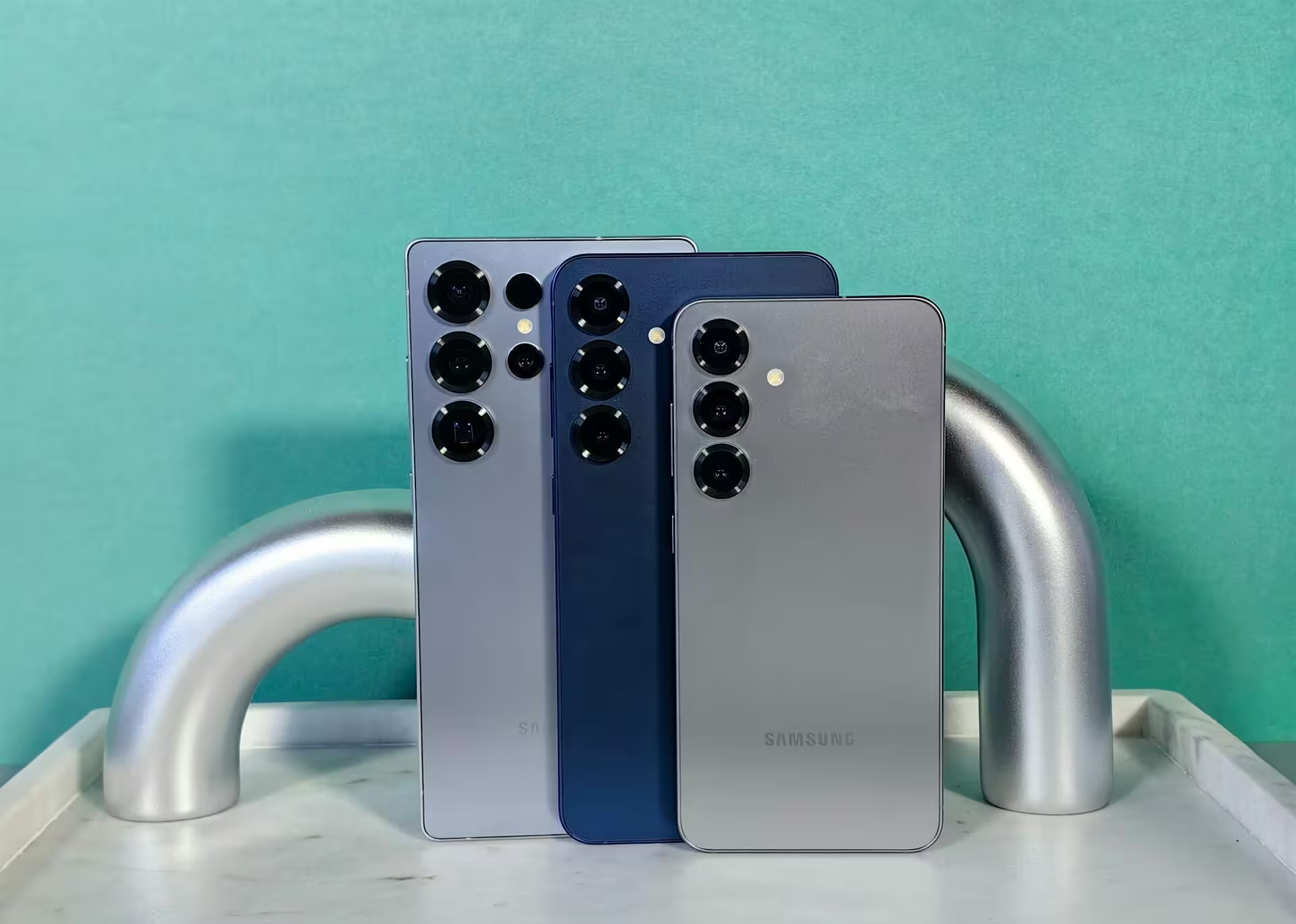4 Minutes
Samsung looks set to deliver a relatively conservative Galaxy S26 lineup in early 2026 — and some analysts think that’s deliberate. Rather than sprinting now, the company may be pacing itself to launch something bolder with the Galaxy S27 in 2027, when Apple is expected to roll out its milestone iPhone 20. What does that mean for buyers, rivals and the broader smartphone race?
Why the Galaxy S26 feels like a holding pattern
Leaks and early reports paint the S26 family as an evolutionary update, not a revolution. Expect modest tweaks: a slightly larger display on the base model, a thinner, rounder S26 Ultra, and a bigger selfie-hole on the Ultra (around 4mm wider) for an expanded field of view. Wireless charging is reportedly being improved to iPhone-level speeds, and Samsung appears to be returning to the rear camera island look.

Camera hardware is largely familiar. The S26 Ultra is rumored to stick close to the S25 Ultra configuration:
- 200MP ISOCELL HP2 main sensor (possibly with a wider aperture)
- 50MP ultrawide (ISOCELL JN3 or Sony IMX564)
- 50MP 5x periscope telephoto (IMX854, possibly with a wider aperture)
- 12MP 3x telephoto (ISOCELL 3LD S5K3LD, maybe with a smaller sensor size)
- 12MP selfie (IMX874)
On the chip front, the Exynos 2600 has generated buzz with strong early benchmark showings. But production choices may limit its presence: only the base and Plus models could see Samsung’s in-house silicon, and only in select markets. That constrained rollout would temper how much of a platform advantage Samsung can claim from day one.
Apple’s iPhone 20: the looming disruptor
Apple is widely expected to pull out major design and camera innovations for its 20th-anniversary iPhone in 2027. Rumors point to a true all-screen handset with an under-display selfie camera and screen edges that curve into the frame for a waterfall effect. Those aesthetic moves could be paired with new input methods — think solid-state buttons with haptic feedback replacing physical volume and power keys.
Camera tech is also a headline. The iPhone 20 may adopt LOFIC (Lateral Overflow Integration Capacitor) sensor designs. In plain terms, LOFIC-type CMOS improves photon capture efficiency, better preserving both low-light detail and bright highlights in the same shot. That reduces the familiar tradeoff between sensitivity and saturation and could give Apple a clear image-quality edge.
Is Samsung deliberately holding back?
There are two ways to read Samsung’s current cadence. One is pragmatic: the MX (mobile) division is a steady cash generator that funds risky bets elsewhere in Samsung — from next‑gen AI compute to advanced packaging, HBM memory and sub-2nm process work. Why pour all resources into a single flagship cycle when the broader company roadmap demands capital?
The other view is strategic restraint. If Apple intends to go all-in on a landmark iPhone 20, Samsung may benefit more from saving its most radical moves for 2027. Unleashing a conservative S26 and following with a bold S27 would preserve market leverage. In that scenario, 2027 becomes the point where Samsung’s 2nm investments, rebuilt Exynos architecture and heavy AI bet start producing visible advantages.
Imagine the chessboard: Apple prepares a head-turning iPhone 20; Samsung deliberately waits a turn to counterpunch with a redesigned S27 that showcases its best silicon, sensor and AI work. For consumers, that could mean a year of minor refinements followed by a potentially dramatic leap.
Whether Samsung is simply risk‑averse, resource‑smart, or playing a long tactical game, one thing is clear — the smartphone war for 2027 is already shaping up to be about more than just specs. It will be about timing, architecture and who executes their multi-year bets best.
Source: wccftech
Comments
atomwave
Is Samsung really pausing to bait Apple? feels strategic, or just resource juggling. risky move, could backfire…


Leave a Comment